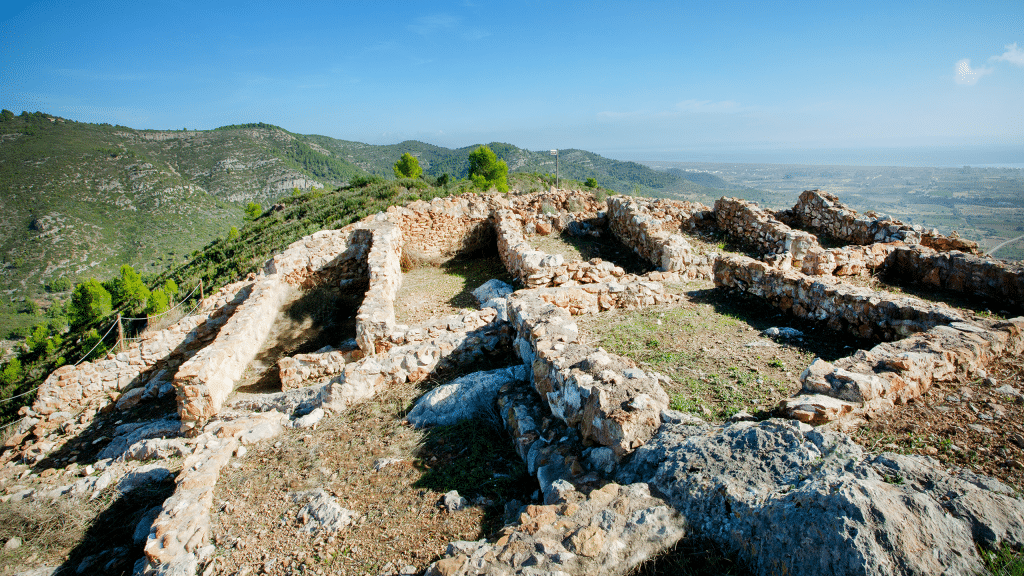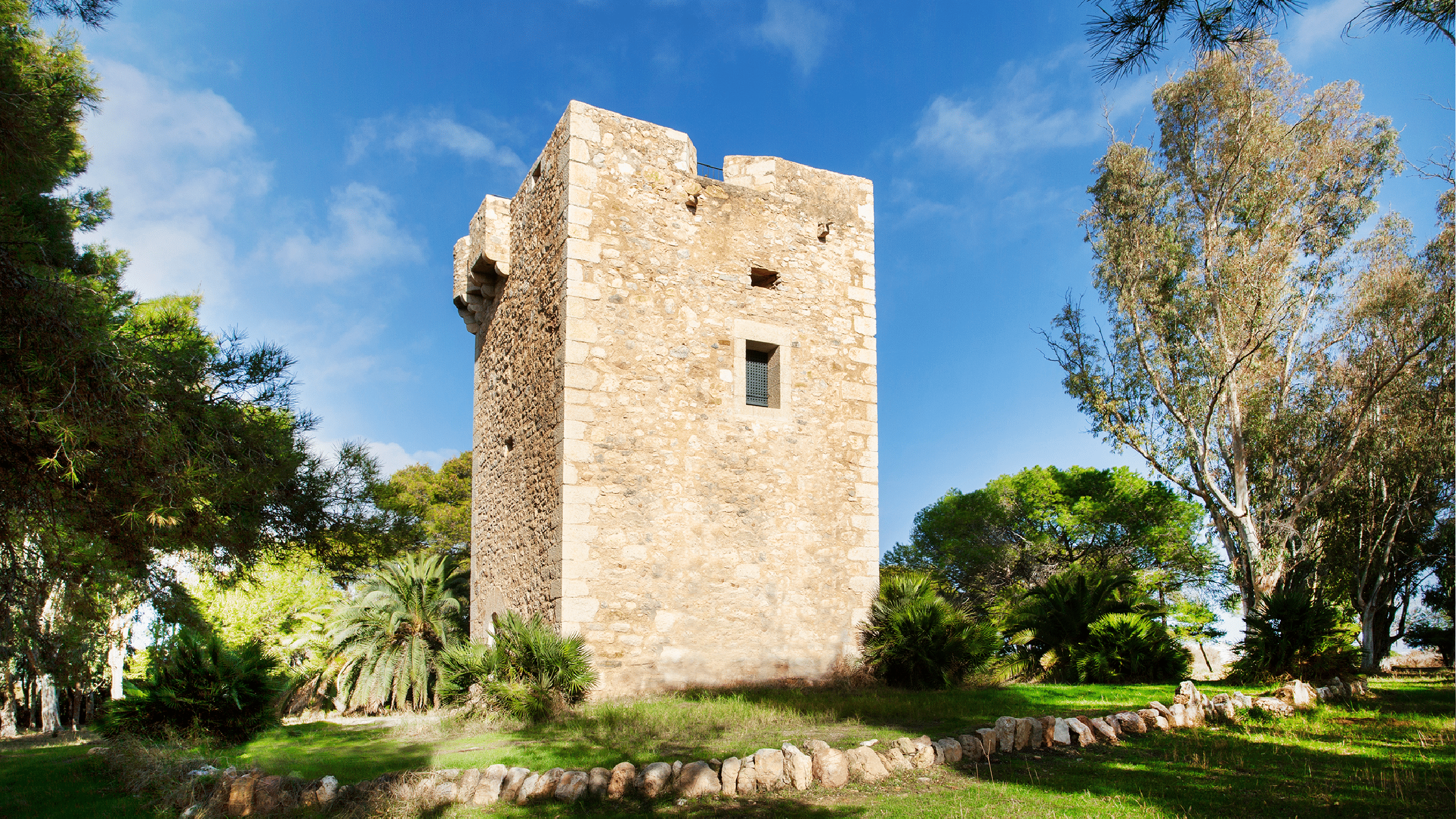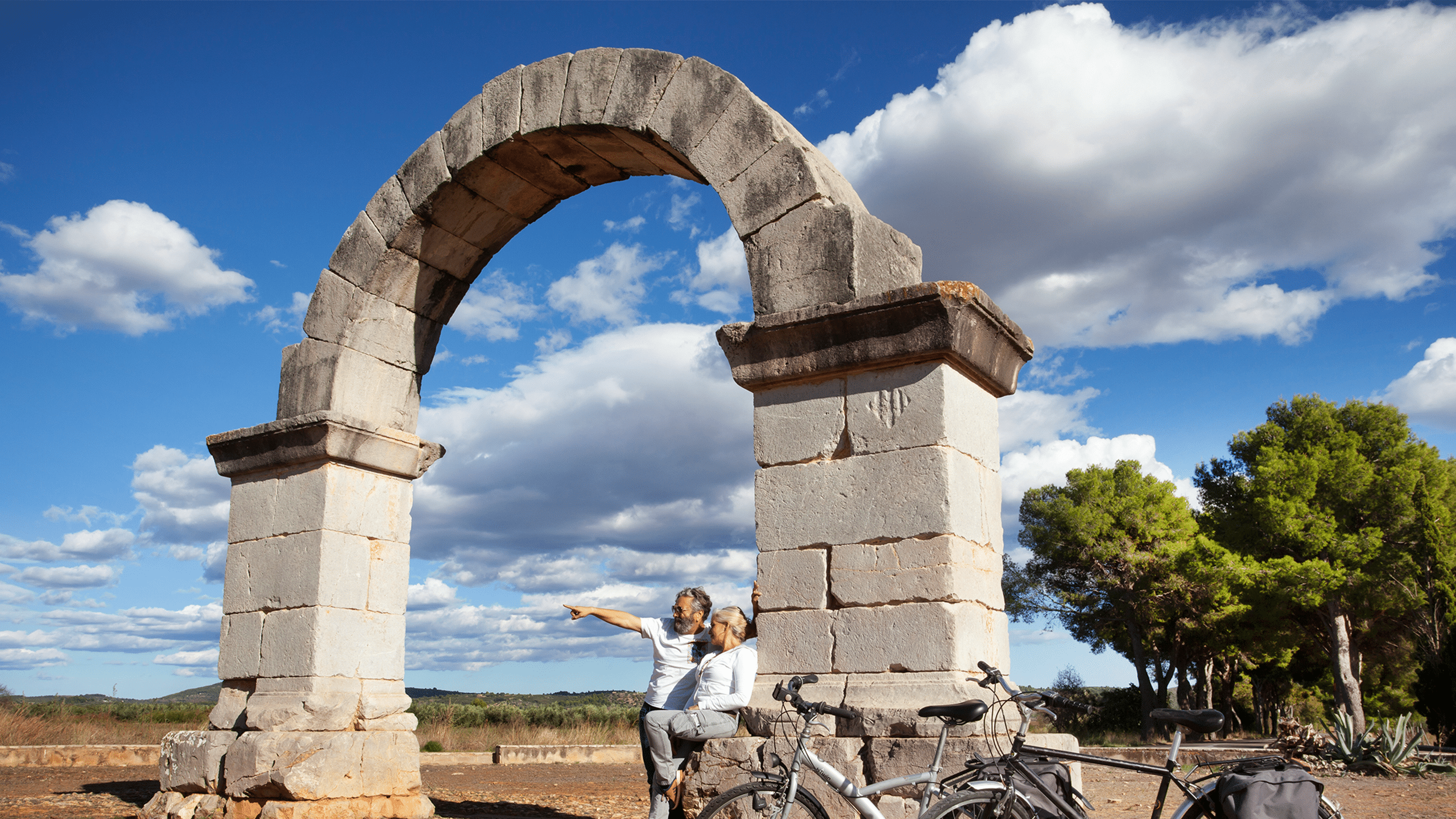History
A splendorous
past
Cabanes, in La Plana Alta, is 25 km from Castelló de la Plana. Its 132 km² make it one of the largest municipalities in the province. It has varied terrain, ranging from mountainous landscapes to one of the few unspoilt coastal areas in the Mediterranean. At present, it has about 3,000 inhabitants, spread among several population centres: in the municipality of Cabanes, in the most inland part, and in the Ribera de Cabanes, where there are several towns extending up to the coast.
History A splendorous past
Cabanes, in La Plana Alta, is 25 km from Castelló de la Plana. Its 132 km² make it one of the largest municipalities in the province. It has varied terrain, ranging from mountainous landscapes to one of the few unspoilt coastal areas in the Mediterranean. At present, it has about 3,000 inhabitants, spread among several population centres: in the municipality of Cabanes, in the most inland part, and in the Ribera de Cabanes, where there are several towns extending up to the coast.
From Mortórum
to the Roman arch


Vestiges of civilisation found in Cabanes date back to the Iberian period. An example of this is the Iberian settlement on the hill called Mortórum. This settlement is dated from the 7th to 1st centuries BC. Also, off the coast of Torre la Sal, there is a settlement now submerged by the sea.

FROM THE MIDDLE AGES TO THE PRESENT DAY
The town of Cabanes was founded in 1243 as a farmhouse connected with Miravet. The rise of Cabanes and the depopulation of Miravet led to the municipal districts of Albalat, Sufera and Miravet being joined together in 1575. This is the reason for the three castles in the municipality’s coat of arms. Cabanes was initially made up of just a few streets. However the town’s growth required its walls to be restructured, and it underwent various modifications and enlargements over the centuries.
Like any walled settlement, it had entrance gates, which also acted as checkpoints. The most outstanding are the El Mar, Sant Mateu, Sant Vicent, Sant Antoni and El Sitjar gates, only the last of which still stands. The walled enclosure was preserved until 1857, but today two towers from it can still be seen standing outside the walls.

Cabanes, land of
civilisations
Contact us
CABANES TOWN COUNCIL
Plaza de la Iglesia, 5
964 33 10 01
cabanes@cabanes.es
www.cabanes.es
TOURIST OFFICE
Plaza de la Iglesia, 5
964 65 70 32
cabanes@touristinfo.net
Friday, Saturday and Sunday from 10 a.m. to 2 p.m.
turisme.cabanes.com © 2021 All rights reserved| Privacy Policy | Legal Notice
turisme.cabanes.com © 2021 All rights reserved| Privacy Policy | Legal Notice
Design and programming: joanrojeski estudi creatiu
Design and programming: joanrojeski estudi creatiu